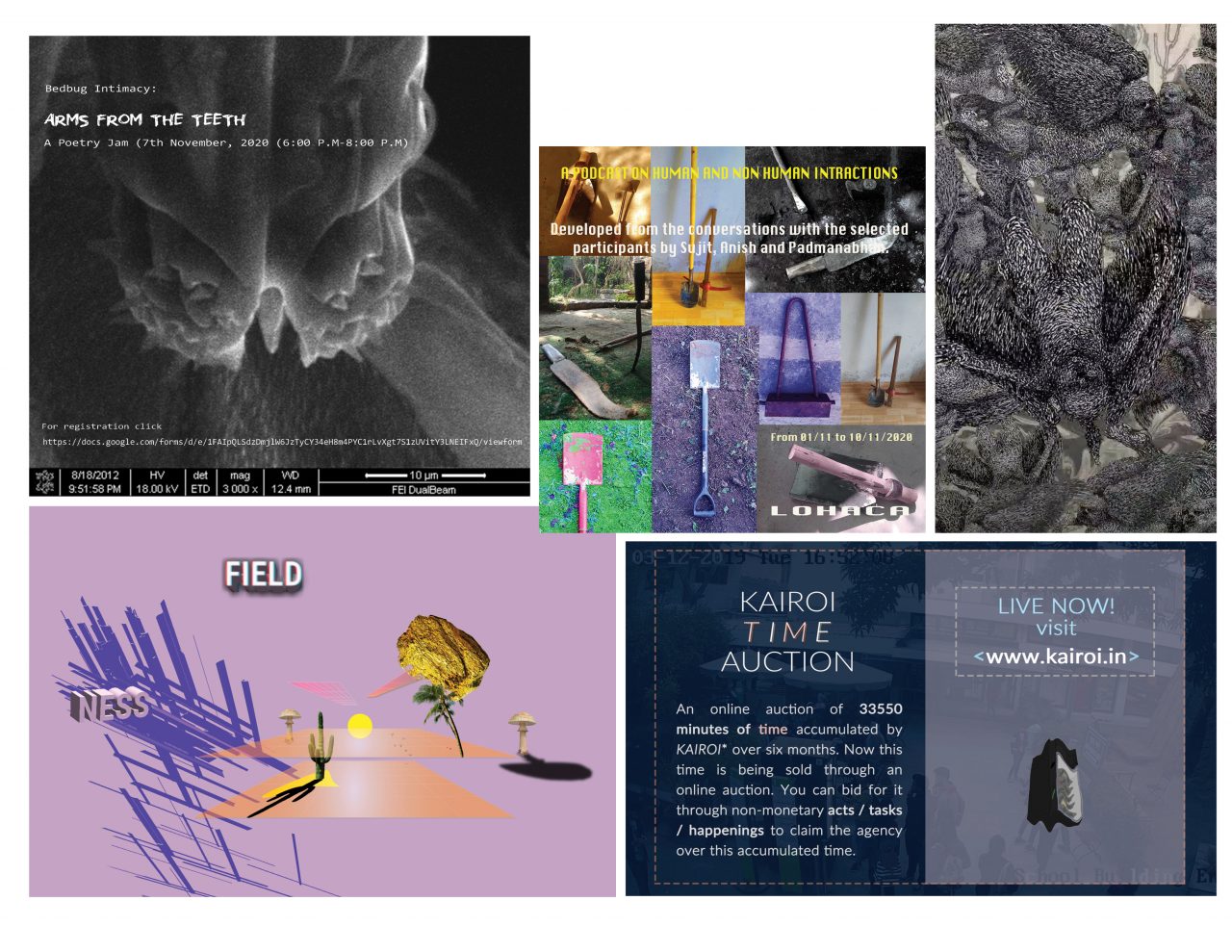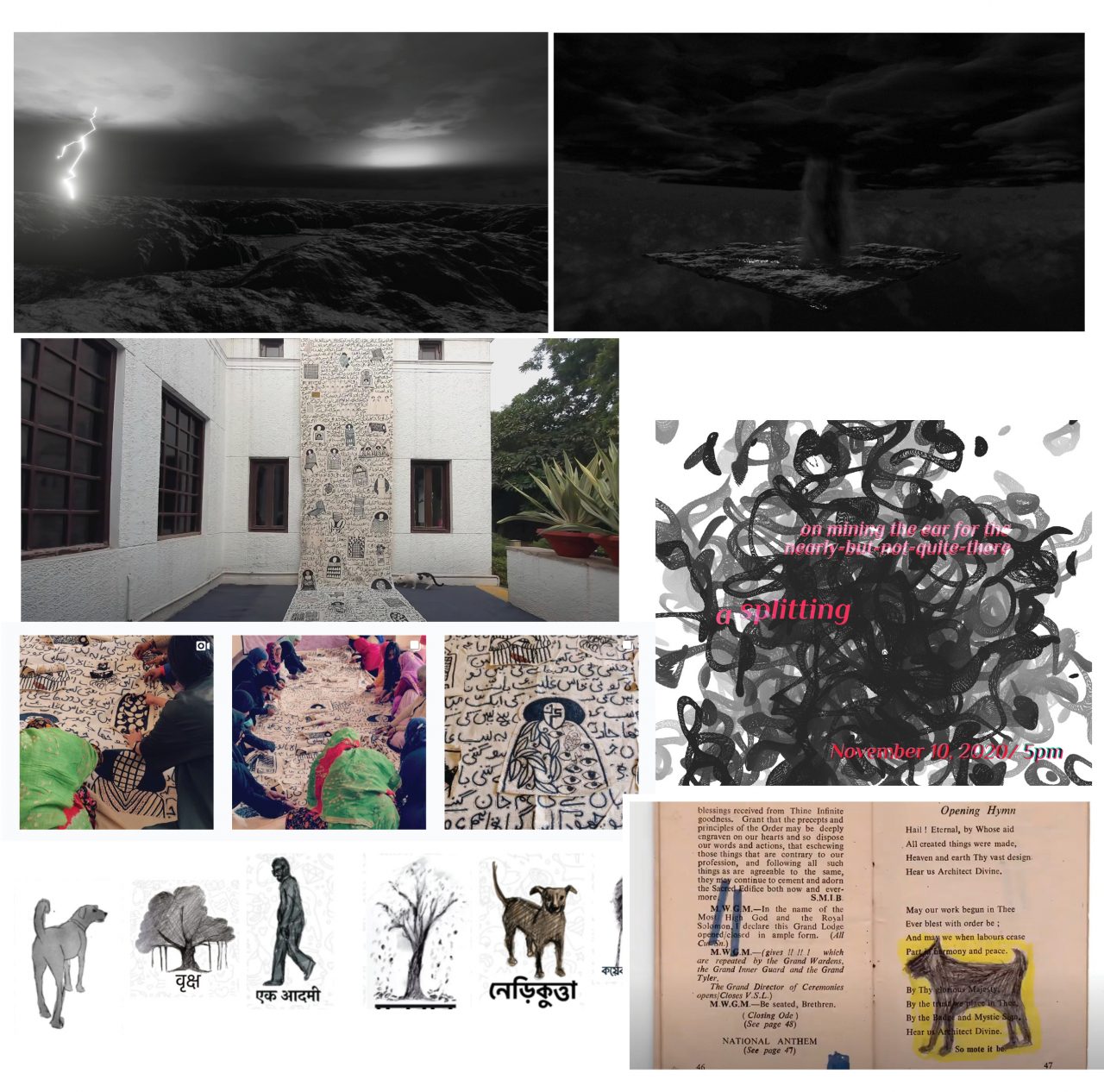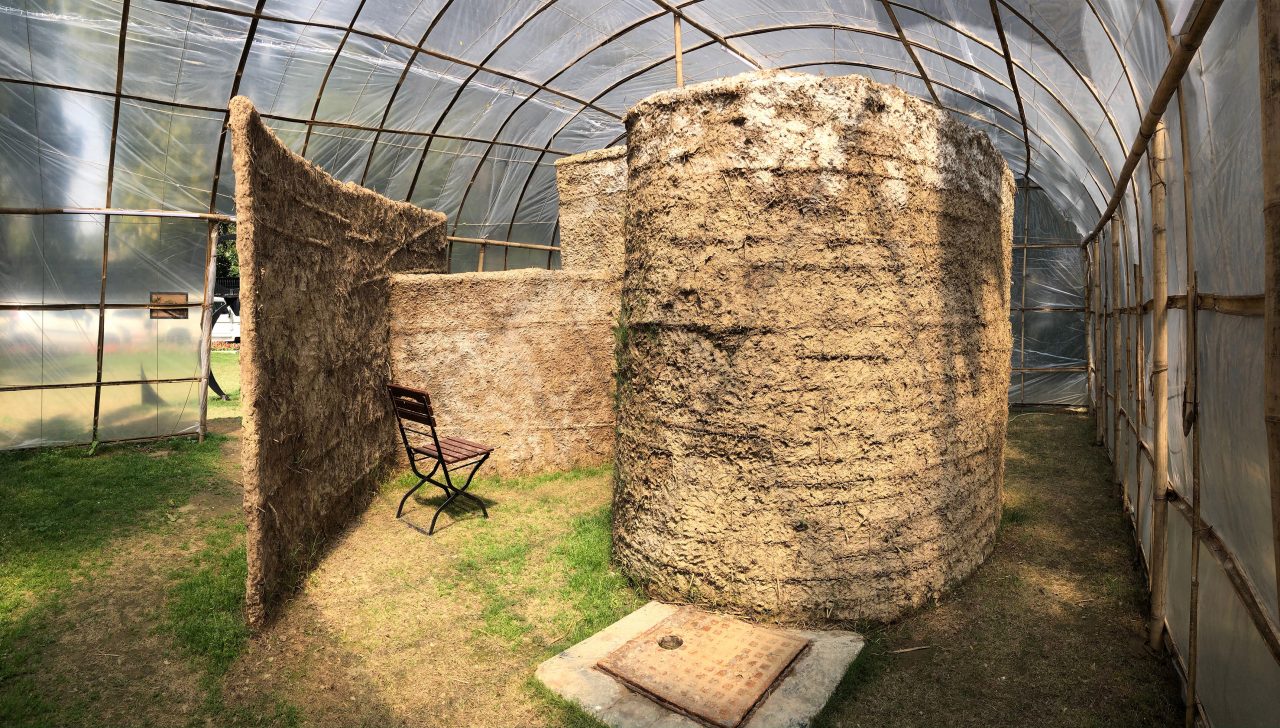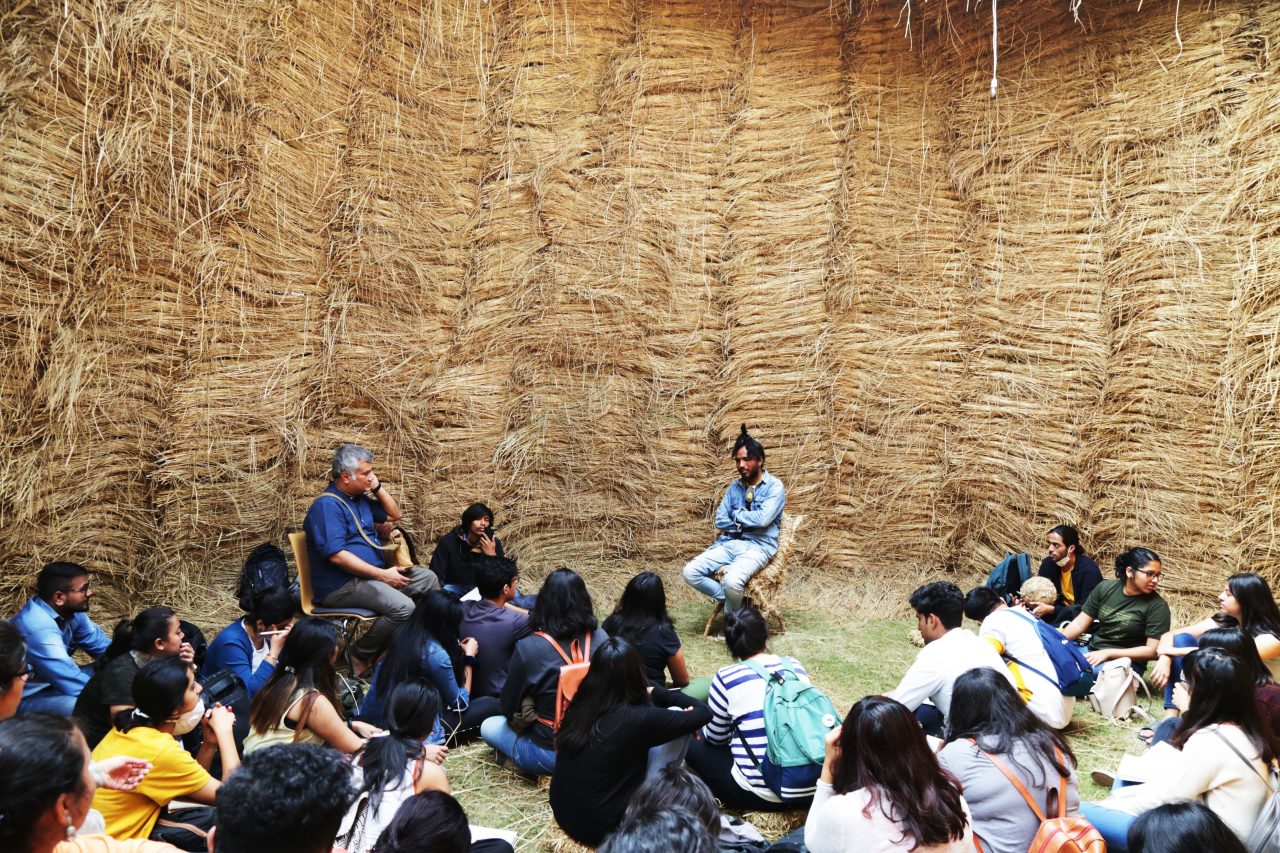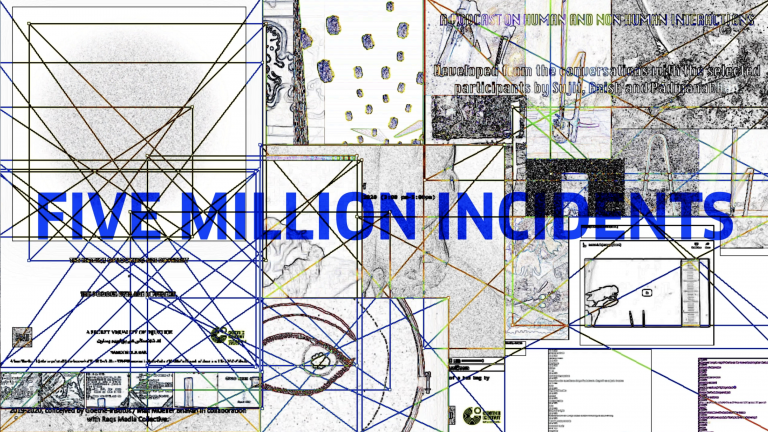Five Million Incidents
Bio-Weathering the Bedrock of Time
a future for Five Million Incidents (August, 2021)
A billion years ago, the first life that appeared on dry land as precursor to all present forms of terrestrial life was a now extinct species of fungus called Ourasphaira giraldae. It’s called ‘ourasphaira’, or long tailed sphere, after its distinctive shape, which looks like a balloon with string tailing behind it. The world found out about this early terrestrial kickstart for life only two years ago, in 2019, when its fossil traces turned up in cores drilled from shale rock samples taken at a geological site called the Grassy Bay Formation in Victoria Island, in North Western Canada’s remote Arctic frontier. It’s very cold out there, very far from every other place on earth, but only deceptively barren. There’s nothing really remarkable about Ourasphaira giraldae, apart from its status as the pioneer of terrestrial life. It doesn’t do much, even as far as fungi go.
But in one specific way it is indeed remarkable.
Infrastructure of Life
If Ourasphaira giraldae is indeed the first fungus on land, as some scientists, especially paleo-biologists, claim it is, then it is this microscopic long-tailed-balloon form of life—neither mineral, nor vegetable, nor animal—that begins the transformation of rock into soil, by a process called bio-weathering. The fungus sends tiny shoots—hyphae—that bore into hard rock with immense pressure, loosening phosphates, nitrates, calcium and a host of other materials. It does this to nourish itself because it eats minerals; the rock is food for the fungus. And as it feeds, it spreads, sending hyphae into all directions over and into the surface of the rock. What this feeding frenzy does, over time, is to turn hard rock into soft, powdery, loamy clay and dust – into soil. Into something that can welcome plants brought in by ocean waves onto rocky shores to put down roots and, by doing so, drive photosynthesis—the turning of light into life, and food, for themselves and the animals of the future. If you notice patches of fungus, as in mycelium, grow in the wake of seepage on a hard cement wall, what you are watching is the primeval activity of bio-weathering. It happens everywhere, on rock, under the bark of trees, on cement, on our skin, and even in the soft tissues of our lungs.
This is how, over millions of years of fungal rock-mining, the nutrients that make it possible for plants to take root and thrive are formed. In other words, fungi, and then plants, and then oxygen, and then animals.
New Occurrences
Each work of art is a new occurrence in time. An incident. Perhaps it is the accidental, or half-unconscious catalyst of intentions that take their time to unfold and make themselves known. Is this something like what happens when the first fungal spore makes a soft landing on the hard surface of an exposed rock on the seashore of a billion years ago? Think of an incident as a fold in time—the extension of a fungal tendril, a quickened heart-beat, an epiphany, a flash of insight, an outbreak of goose-bumps, a moment of excitement, an occurrence, an encounter, a sighting, a memory. An incident can be anything that transforms the way we live or think, a conversation that carries a surge in its wake, an event that makes us rethink everything. Millions of incidents can populate a duration, making it come alive as an embodiment of temporal plenitude. That plenitude is a ground for making things anew.
There’s a difference between being a ‘facilitator’ to art practices, which is what most cultural institutions are trained at, and being a ‘host’. It is this difference that we were primarily interested in bringing to the attention of Goethe Institute, Delhi, upon whose invitation the Five Million Incidents (FMI) process was initiated. Here, when we use the word ‘host’, it is to suggest that it be considered in a very animate, lively, almost biological sense. Like, say, the way flour is a ‘host’ for the fungal yeast that turns it into bread. Or the way that milk ferments into cheese when exposed to a ‘culture’. In each of these instances, what the ‘host’ or the ‘medium’ provides is a context for a ‘culture’ to grow in.
A Stratigraphy
Our understanding of the capacity of art practices to write new scenarios, build new milieux, unleash unpredictable forms of energy comes out of a long history of proto-curatorial, and then, curatorial, initiatives that we have been involved with over the last two decades in the city of Delhi. Five Million Incidents sits on a history of earlier incidents, just as one geological stratum sits on – and is occasionally permeated by – other strata.
In Earthworms Dancing: Notes for a Biennial in Slow Motion, an essay we had written in 2009, we had noted,
In “slow-motion” processes such as the subterranean dance of the earthworms, lie the foundations for the fertility of the future. The earthworms take their time; let’s take ours.
This bio-weathering of the bedrock of our time in the city of Delhi begins with the Sarai initiative that we co-founded at the Centre for the Study of Developing Societies in 2000. Sarai began as a platform that hosted encounters between research and practice. It was a place to think, make, and express new forms and sensibilities on a sustained basis. Initially, Sarai considered itself primarily with what were then called ‘new media’, set against an evolving understanding of the vernacular, cosmopolitan urbanity of early 21st century Delhi. It committed itself to protecting the exercise of the creative will and intellectual enquiry. This constellation of intentions and practices realized itself through the interweaving of an early form of social media, and was activated through a host of email list serves, and intensive offline encounters.
In some years, another layer was added—called ‘City as Studio’—in which artists were invited to stake the city as a site for art-making and discursive moves. Through the annual publication of Sarai Readers and intermittent broadsheets, an improvisation of exhibition procedures, and with neighborhood media and knowledge-experiments, a peer-to-peer network evolved, along with the proliferation of forms that could stretch the definition of what it meant to be an artist and a practitioner. From the ‘City as Studio’ specifically, a model of peerage, and a mode of co-inhabitation, of listening and sharing, of artistic companionship and comradeship, and of creating a commons of time emerged.
There were durational exhibition processes, such as the 9-month long Sarai Reader 09 Exhibition at the Devi Art Foundation at Gurugram in 2012, and INSERT2014 which included a speculative re-drawing the cultural infrastructure by artists and architects called the New Models for Common Ground, exhibited at the Mati Ghar, Indira Gandhi National Centre for Art in Delhi in 2014, supported by the Inlaks Foundation.
The Sarai Reader 09 exhibitionary process tested the model of an exhibition that makes itself through a combination of parallel and sequential processes, with art works transiting from conception to production to presentation, and making room for each other, as their turns came and went, all within the very public gaze of the exhibition’s space and duration. The ‘New Models for Common Ground’ process opened up the space of artistic propositions for a repurposing of already available infrastructure through a new poetics of space, and reanimating new drafts for usage.
All these processes outlined a memory and a confidence in durational intensity, and had a cross-pollination of practices, alongwith a commitment to publicness in art practice in the city of Delhi.
Persistent Commoning
This long memory – of practice, and a search of durational and speculative art practices in the city – enabled the Five Million Incidents process to see the grounds of the Max Mueller Bhavan as a site that lends itself to continuous spatial remodeling. Classrooms, libraries, auditoria, garden, pathways, lobby, glass walls, verandah became transformed, sometimes unrecognizably, as they responded to the signatures of projects becoming works. And so, gardens sit within gardens, trees become stages, and tents, studios, pavilions, boudoirs, plots of cultivated land, kitchens, spaces for intimacy and commoning nest themselves in physical space, in digital space, and in conversation.
Projects at FMI came to see themselves as performances of questions and concepts, as intimate encounters between bodies and minds, between speech and movement, where the lines between transmitter and receiver of ideas could blur in the flux of a moment’s exchange.
It is as if different layers of life forms, having created the special conditions of their spatio-temporal co-existence, were to stay busy in continuing to create vast networks of lichen and mold that lie at the base of so many complex forest ecologies. No forest would exist without the symbiotic embrace of the sustained networked-ness of these cross-species assemblages. Five Million Incidents became precisely such a network, and it thrived on prior sediments, stretching its tendrils and roots into all the temporal directions in the forest of the cultural life of our time.
With FMI, we extended our invitation first to a group of engaged artists, architects, curators, and teachers to constitute a collegial think-well that read and argued proposals, and acted as interlocutors for the artists. They became instigators of scaling and fine detailing of the projects as artists’ propositions went through passionate reading, were discussed threadbare, and relationships of mentorship further brought in a web of questions, doubts, and possibilities.
This process of foresting and commoning was made possible by the institutional courage that the Goethe Institut in Delhi and Kolkata displayed in extending a surprising invitation to let a host of ‘others’ occupy their space(s) and time(s). The institutional custodianship that they undertook to work with, which included negotiating the crests and troughs of the very human relationships with more than 100 artists, each with their individual demands and desires, is a story in itself.
Online Strivings
More than midway through the FMI calendar, the Covid 19 pandemic struck the entire process. And after a pause to retreat and rethink, activities and practices returned to life, online, instead of offline. Artists held performances on social media spaces; projects migrated to online exhibitionary platforms, and blogs, podcasts and other dialogic modes foregrounded themselves. The entire process adapted itself to remoteness while striving to maintain the intimacy and conviviality that had marked its offline life.
FMI stretched across an extraordinary time—2019 and 2020—of turbulence and upheaval in India and the world; it was a time of economic meltdown, social anxiety and the criminalization of dissent. Against this setting, the exploration of non-rivalrous and egalitarian modes of the acceptance of others as co-inhabitants in time asserts the desirability of porous and intimate contexts of co-creation, yielding polymorphous fields made up of many minor movements and transformations.
Throughout the time it remained alive, Five Million Incidents whispered in libraries, grew in fungal gardens, cooked in kitchens, sewed blankets of shared warmth, dug in, stood its ground, pulped protocols of casteist exclusion, danced in drag, laughed, created archives of ephemera and transience, saw visions through eyes injured by violent state action, sang in many languages, saw Saturn with its glorious rings, and sometimes went into spaces where words cease to matter.
If the spores of a single fungal species can spawn all plant and animal life that has been sustained on this planet’s arid surface for a billion years, think of what five million incidents can do for the future of the artistic life of this city, and the world.
In December 2020, while summing up the Five Million Incidents experience, we argued,
There is an urgent need to produce milieus that welcome and sustain a multiplicity of practices with the comfort and confidence of durational, incremental, and layered artistic acts which build, and cascade. This momentum of accretive density leads to the proposition that artistic practices are best expressed in a perennial state. Their conjoining intensities—of mode and disposition—produce a ground for the emergence of new values of care and disorientation for a new contemporary.
We look forward to the journey of contemporary art in the coming decade becoming a hothouse for radical rethinking of life and its conditions of sustenance.
End Notes:
Earthworms Dancing: Notes for a Biennial in Slow Motion (2009)
https://www.e-flux.com/journal/07/61387/earthworms-dancing-notes-for-a-biennial-in-slow-motion
City as Studio (Sarai CSDS – 2009 to 2013)
https://sarai.net/city-as-studio
Art as a Place, Sarai Reader 09, Projections (Sarai/CSDS, 2013)
https://sarai.net/sarai-reader-09-projections
https://www.e-flux.com/announcements/33853/sarai-reader-09-the-exhibition
Common Ground; Insert 2014, Inlaks Fundation (Delhi 2014)
https://works.raqsmediacollective.net/wp-content/uploads/2020/08/INSERT2014Publication_Web.pdf
Five Million Incidents (Eflux, 10 December, 2020)
https://www.e-flux.com/announcements/363511/five-million-incidents
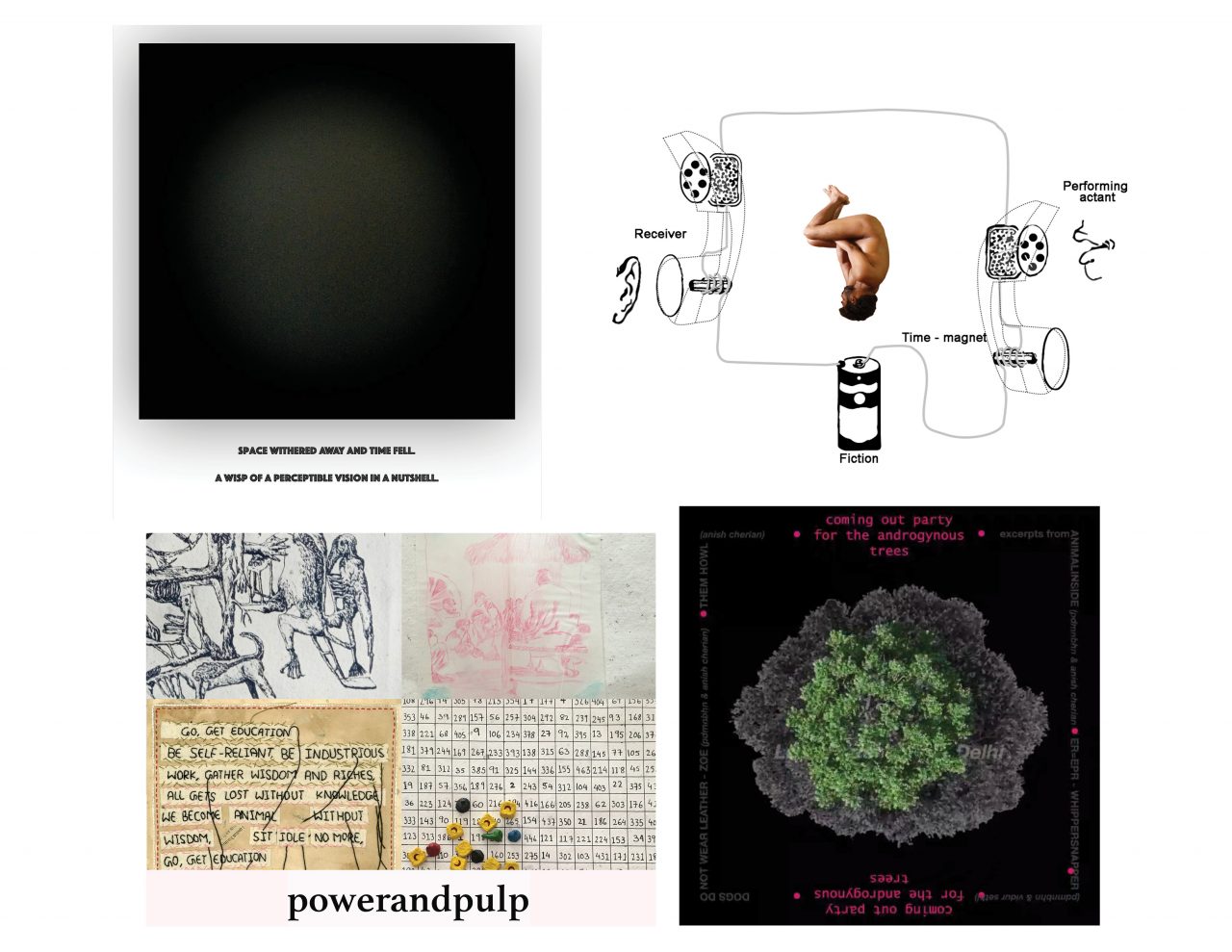

Actants
Manmeet Sandhu, Sahil Ravindra Naik, Amol Patil, Dara Okat, Pragya Sharma, Pallavi Paul, Urvi Vora, Manmeet Devgun, Kaushal sapre & Mohit Shelare, Gram Art Project, Avril Stormy Unger, Pramod Kumar, Jagrut Raval, Preeti Singh, Rohini Devasher, Paribartana Mohanty, Dharmendra Prasad, Jyothidas KV, Trimukhi Platform, Sahej Rahal, Ish Shehrawat, Nilanjana Nandy, Koustav Nag, Dhara mehrotra, David Soin Tappeser, Sumona Chakravarty, Amitesh Grover, Devashish Sharma, Shreyans Iyer, Arnika Ahldag & Meenakshi Thirukode (Instituting Otherwise), Soumya Sankar Bose, Sonam Chaturvedi, Ameet Singh, Madhuja Mukherjee & Avik Mukhopadhyay, Renuka Rajiv, Aishwarya Walvekar & Shromona Das, Bhaskar Hazarika, Centre for Arts and Social Practice (CASP) & Kush Badhwar, Shaunak Mahubani & Vidisha Fadescha, Abhishek Basu, Sangeeta Rana, Ruchira Das, Basement 21, Surajit Biswas, Vikram Iyengar & Anubha Fatehpuria & Pickle Factory Dance Foundation, Sanjib Kalita, Paromita Vohra, Chandrakant Ganacharya.
Avani Tanya, Mithun Das, Pranay Dutta, Aroh Akunth, Vyom Ketan Mehta, Nikita Teresa Sarkar, Awdhesh Tamrakar, Sukanya Ghosh, Namoos Bukhari, Krishnapriya CP & Narendran K, Reiko Shimizu, Ranjana Dave, Navkiran Natt, Sultana Zana, Madhurjya Dey, Saba Tarannum, Suvani Suri, Bhagwati Prasad, Abhijit Pal, Maksud Ali Mondal, Bazik Thlana, Sujit Mallik, Divyesh Amrish Undaviya, Khwaab Tanha Collective, Rajyashri Goody, Atufa Rais, Tayyab Hussain & Reshma Khatoon, Lawai Bembem, Murari Jha, Anish Cherian, Srinivas Kuruganti, Suvendu Chatterjee, Joshua Muyiwa, John Xaviers, Abhishek Hazra, Anuj Malhotra & Suraj Prasad, Arshi Irshad Ahmadzai, Nirali lal, M R Vishnuprasad, Deepa Jayaraman, Ajay Talwar,
Hemavathy Guha, Shraddha Borawake